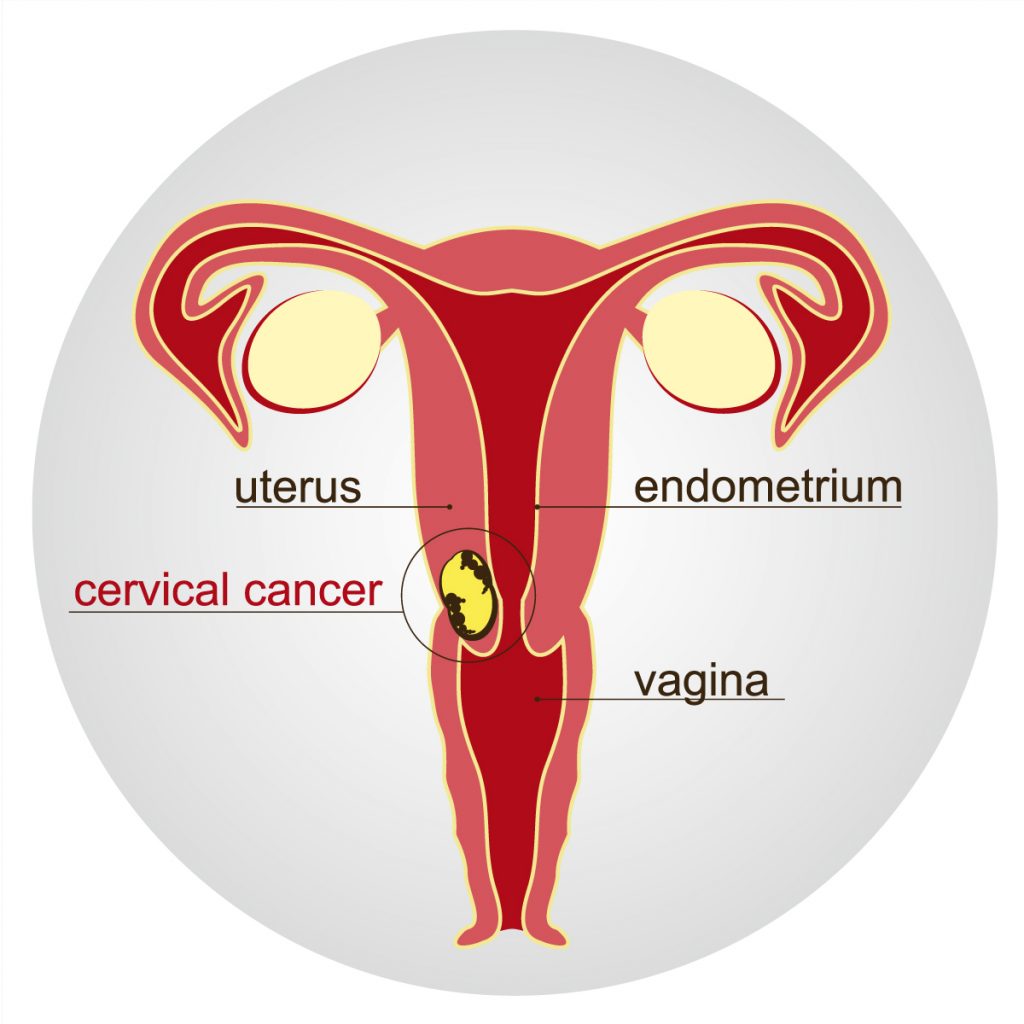
Cervical cancer


Overview
Cervical cancer develops in the cervix. The lowest part of the uterus that is connected to the opening of the vagina is called cervix. Cervical cancer is often caused by human papillomavirus or HPV, which is a sexually transmitted infection.
The immune system in the body blocks the virus from causing damage when HPV is detected. In rare cases, however, the virus can survive for years. This causes the cervical cells to become cancerous. Undergoing screening tests and obtaining the HPV vaccine can lower the risk of developing cervical cancer.
Symptoms
Early-stage of cervical cancer are usually asymptomatic and could be difficult to detect.
The followings are the signs and symptoms of cervical cancer:
- Bleeding from the vagina after sexual intercourse, between menstruations or after reaching menopause
- Heavy vaginal discharge such as blood or watery fluid that may have a bad odor
- Pelvic pain
- Heavier and longer menstruations than usual
If the disease has progressed and cancer has spread to the surrounding tissues or organs, the following symptoms may appear:
- Difficulty urinating, painful urination or sometimes passing of blood
- Diarrhea or pain during defecating or rectal bleeding
- Fatigue, weight loss and no appetite
- Aching back pain
- Swollen legs
- Pelvic or abdominal pain
Consult a gynecologist if any suspicious signs arise for examinations and Pap smear test.
Causes
Cervical cancer generally starts from the DNA mutation of the normal cervical cells. The mutation of cervical cell causes uncontrolled duplication resulting in forming a mass of cells also known as a tumor. This tumor then begins to invade and destroy the healthy cell and tissues. These cells have the tendency to metastasize (spread to other parts of the body).
It is common for most people to be infected with HPV but most of them doesn’t develop cancer from virus due to an immune system self-defense. Cancerous cells are transformed from an abnormal cervix cells due to weakened immune system. HPV virus is infected through sexual contact whether it is anal, oral or through the vagina. The other factors such as an environment or the lifestyle choices of the patients also determine their possibilities of developing cervical cancer.
Types of cervical cancer
- Squamous cell carcinoma: is the most common type of cervical cancer. This cell type originates in squamous cells, that line the external side of the cervix that projects into the vagina.
- Adenocarcinoma: is a form of cervical cancer first arising in the glandular cells which line the cervical canal.
Risk factors
- Having multiple sexual partners may lead to HPV infection. The high risk of obtaining the virus is according to the number of sexual partners a person has.
- Having sexual activities at an early age increases the risk of getting HPV.
- Sexually transmitted infections (STIs) such as chlamydia, gonorrhea, syphilis, and HIV/AIDS increases risk of HPV infection.
- Having a weak immune system raises the chance of developing cervical cancer. The immune system can be weakened by other diseases or having HPV.
- Smoking is associated with squamous cell cervical cancer.
- Intake of miscarriage prevention medicine known as diethylstilbestrol (DES) in the 1950s may put the child at risk of having cervical cancer called clear cell adenocarcinoma.
Contact Information
service@vejthani.com






















